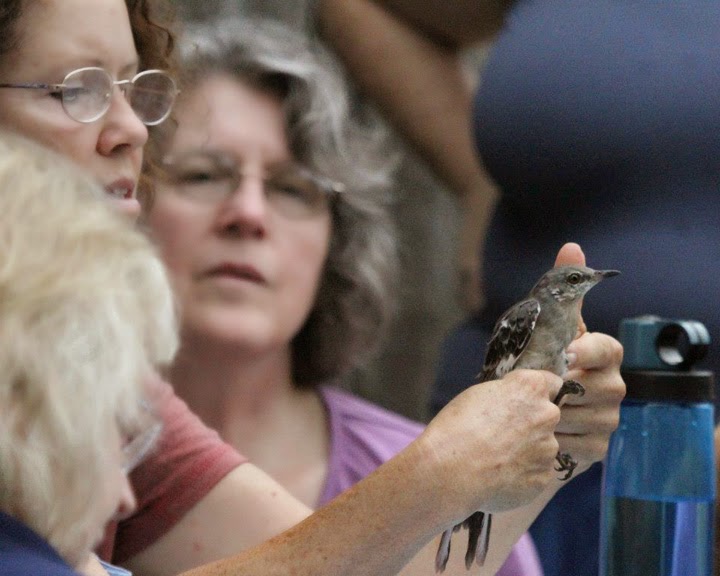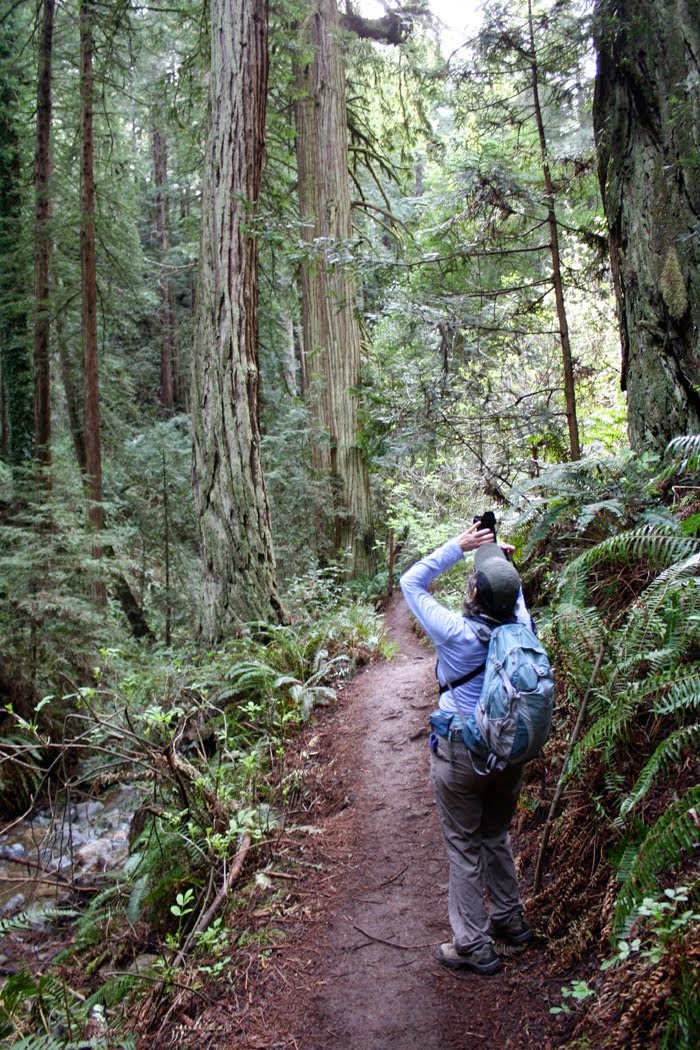What a fun bird to sketch--a long-legged, long billed Limpkin.
I was introduced to this bird in January in Brevard County, Florida, at the Ritch Grissom Memorial Wetlands, also known as, Viera Wetlands. My first view of this species was from way across the wetlands. I couldn't believe my good fortune when on my second visit to the wetlands, we happened upon this handsome individual foraging near the road.
I wish everybody would take the time to sketch what they love in nature. There are few things more intimate than studying a bird (or insert any subject), its feather arrangement, color, its eyes, beak, all the many special attributes that make it suited for the habitat it lives in, as well as, the food it eats. And all of this comes together to give you a deeper understanding of how it all fits together to equal its personality and habits.
I found the spade-shaped white tips on the Limpkin's feathers captivating and beautiful. There are several possibilities for creating these white tips in watercolor--saving the white paper, using masking fluid to resist the paint around it, using the opaque watercolor known as gouache, or a combination of these. Given that half of this page spread was blue drawing paper, I opted for white gouache.
The first thing I had to wrap my mind around, was the shape of this bird's head. I went over the pencil sketch several times to position the angle of the head and jaw as it moves into the throat. I think because of the ruffled feathers, I was initially seeing a more rounded shape and this is a bird with a slender head and neck
The eye, of course, holds the expression. While many artists leave the eye for last, I prefer to put it in early. It gives the bird life and makes it easier for me to see its personality take shape as I paint. Of course, you run the risk of messing it up, too. I lost the lower dark edge and had to repair it. Since the sketch has given me the look I want, when I create a painting I may consider adding the eye after all the facial feathers are in place.
If you haven't tried sketching a bird, you should give it a try. Never mind, that you think you can't draw. This is a sketch. The idea is to get to know the bird. And when you've studied a face like this Limpkin for a while, you can't help but love what you're sketching.
Monday, April 12, 2010
Sketching a Limpkin
Wednesday, April 7, 2010
Fumbling En Plein Air
That's what my first 2010 outside sketching adventure felt like this past weekend--fumbling.
On the ground, nearly eye level with Virginia Bluebells, Bluets and some kind of unsavory large orange ants, I created a pencil sketch of the bluebells before retreating to a nearby stump to continue sketching.
I learn so much each time I try sketching outdoors--lessons in organization, coordination, focus, to name a few, and let's don't leave out memory or personality insights.
Virginia Bluebells
I forgot my water container. And nope, there was no paper towel or tissue to soak up excess water from my juiciest of brushes. But I did bring water in a small bottle and this served as a container. It wasn't like I was miles away from the forgotten supplies, but I treated this experience just as if I were far away. There's no better way to impress the memory.
We were having a low 80's day with no leaves yet on our budding trees. More than an hour into my sketching, the late afternoon sun became uncomfortable and I dropped my paint brush. Now, dropping a paint brush isn't normally a big deal. It's not unusual for me to flip the brush out of my hand at least once while sketching. But when I retrieved it this time, it was coated with clumps of muddy earth. That was it! I retreated back to the predictability of my kitchen.
Plein air still feels overwhelming to me at the moment. But want-to is all that's needed to get through this and that, I have plenty of. A few challenges seem obvious, like having the right tools on hand, finding a comfortable place to work, making a decision about just what out of all this wonderful nature you will choose for a subject. Practice, of course, will do its magic on these.
And what you learn on these small adventures about sketching and yourself, far out weighs the awkwardness of the moment. For example, I noticed I hurry when I feel uneasy but my natural style is to take my time. I'll be aware and remember to breathe next time. And the size of my initial bluebell sketch didn't lend itself to the kind of detail I enjoy, especially with the size brush I had on hand. So I'll pack a smaller brush in my kit and remember that ink and graphite are other possibilities for this detail. My goal is to enjoy both the effort and the result.
It's a bit like learning an entirely different skill set. No one can teach this to you any more than another person can teach you your style. It's for you to explore and discover. What you see, how you express it, and how you decide to put it all together will be all your own. And in the outdoors with nature, the possibilities for this are endless!
On the ground, nearly eye level with Virginia Bluebells, Bluets and some kind of unsavory large orange ants, I created a pencil sketch of the bluebells before retreating to a nearby stump to continue sketching.
I learn so much each time I try sketching outdoors--lessons in organization, coordination, focus, to name a few, and let's don't leave out memory or personality insights.
Virginia Bluebells
I forgot my water container. And nope, there was no paper towel or tissue to soak up excess water from my juiciest of brushes. But I did bring water in a small bottle and this served as a container. It wasn't like I was miles away from the forgotten supplies, but I treated this experience just as if I were far away. There's no better way to impress the memory.
We were having a low 80's day with no leaves yet on our budding trees. More than an hour into my sketching, the late afternoon sun became uncomfortable and I dropped my paint brush. Now, dropping a paint brush isn't normally a big deal. It's not unusual for me to flip the brush out of my hand at least once while sketching. But when I retrieved it this time, it was coated with clumps of muddy earth. That was it! I retreated back to the predictability of my kitchen.
Plein air still feels overwhelming to me at the moment. But want-to is all that's needed to get through this and that, I have plenty of. A few challenges seem obvious, like having the right tools on hand, finding a comfortable place to work, making a decision about just what out of all this wonderful nature you will choose for a subject. Practice, of course, will do its magic on these.
And what you learn on these small adventures about sketching and yourself, far out weighs the awkwardness of the moment. For example, I noticed I hurry when I feel uneasy but my natural style is to take my time. I'll be aware and remember to breathe next time. And the size of my initial bluebell sketch didn't lend itself to the kind of detail I enjoy, especially with the size brush I had on hand. So I'll pack a smaller brush in my kit and remember that ink and graphite are other possibilities for this detail. My goal is to enjoy both the effort and the result.
It's a bit like learning an entirely different skill set. No one can teach this to you any more than another person can teach you your style. It's for you to explore and discover. What you see, how you express it, and how you decide to put it all together will be all your own. And in the outdoors with nature, the possibilities for this are endless!
Saturday, April 3, 2010
A Turkey Work of Art
That's how I feel about turkeys lately, works of art parading through my yard.
Certainly not the prettiest art by some standards, unless you're a turkey, but definitely faces with character, prehistoric character. Everyone of them is uniquely decorated with expression and with those curious skin enhancements, especially the sub-adult males in the "jake" stage.
Jake is a new term for me (an immature tom), along with snood, caruncles and dewlap, all descriptive terms for various parts of the turkey anatomy, that I discovered while researching the difference between young and mature, male and female. I found a nice anatomy reference on the Wild Turkey Federation's website (link below).
In general females have feathers on their heads while males do not. The males develop a bald head that appears whitish in the mature tom, with reddish skin enhancements that increase as they mature. The major caruncles extend down their neck and these folds of skin become bright red and engorged with blood while courting. Females have some skin enhancements also, but they are generally smaller and bluish making her overall appearance camouflaged while incubating.
According to my Atlas of the Breeding Birds in Tennessee, males establish territories in late winter here and hold them throughout the spring with egg-laying peaking during the last two weeks of April. I'm mostly seeing females and immature males. It does make me wonder where male territories would be around this suburban area, with its pockets of agricultural fields and wooded ravines.
If I see a male displaying, you'll be the first to know. That would definitely fall into my idea of art!
Certainly not the prettiest art by some standards, unless you're a turkey, but definitely faces with character, prehistoric character. Everyone of them is uniquely decorated with expression and with those curious skin enhancements, especially the sub-adult males in the "jake" stage.
Jake is a new term for me (an immature tom), along with snood, caruncles and dewlap, all descriptive terms for various parts of the turkey anatomy, that I discovered while researching the difference between young and mature, male and female. I found a nice anatomy reference on the Wild Turkey Federation's website (link below).
According to my Atlas of the Breeding Birds in Tennessee, males establish territories in late winter here and hold them throughout the spring with egg-laying peaking during the last two weeks of April. I'm mostly seeing females and immature males. It does make me wonder where male territories would be around this suburban area, with its pockets of agricultural fields and wooded ravines.
If I see a male displaying, you'll be the first to know. That would definitely fall into my idea of art!
Subscribe to:
Posts (Atom)
Ocean Trail at Rancho Palos Verdes Preserve, California--2015

Joshua Tree National Forest, California, with son Chad and daughter Thuan--2015

Photo credit: Thuan Tram
Bird banding with Mark Armstrong at Seven Islands State Birding Park - 2014

Photo courtesy of Jody Stone
Birds Close-up

Photo courtesy of Karen Wilkenson
Enjoying Gray Jays in Churchill, Manitoba

Photo courtesy of Blue Sky Expeditions
A dog sled experience with Blue Sky Expeditions, Churchill, MB--2014

Photo courtesy of Blue Sky Expeditions
Churchill, Manitoba--2014

Photo courtesy of Blue Sky
2014 Hummingbird Festival

Photo courtesy of Jody Stone
Smithsonian National Zoo with one of my Whooping Crane art banners and son, John--2014

Muir Woods on the Dipsea Trail at Stinson Beach, California--2014

Photo courtesy of Wendy Pitts Reeves
Checking out the gulls at Stinson Beach--2014

Photo courtesy of Wendy Pitts Reeves
Discovery Hike in Denali National Park and Preserve, Alaska--2012

Photo courtesy of Ruth Carter


















